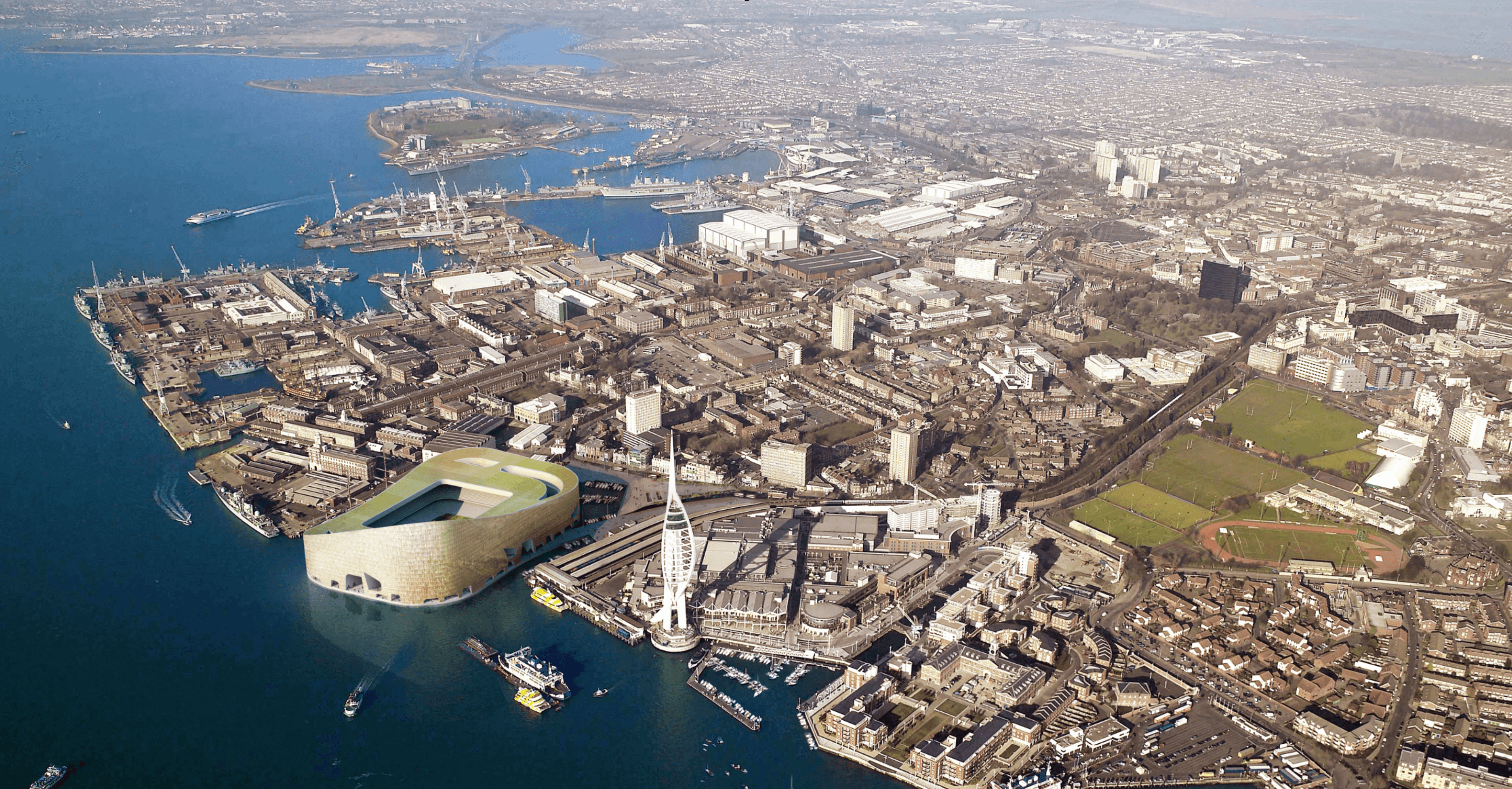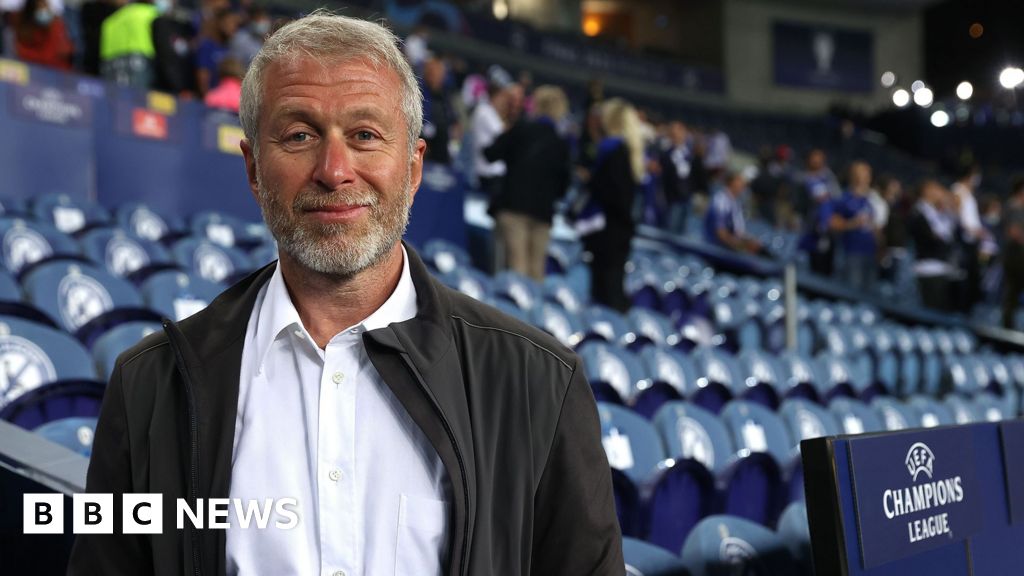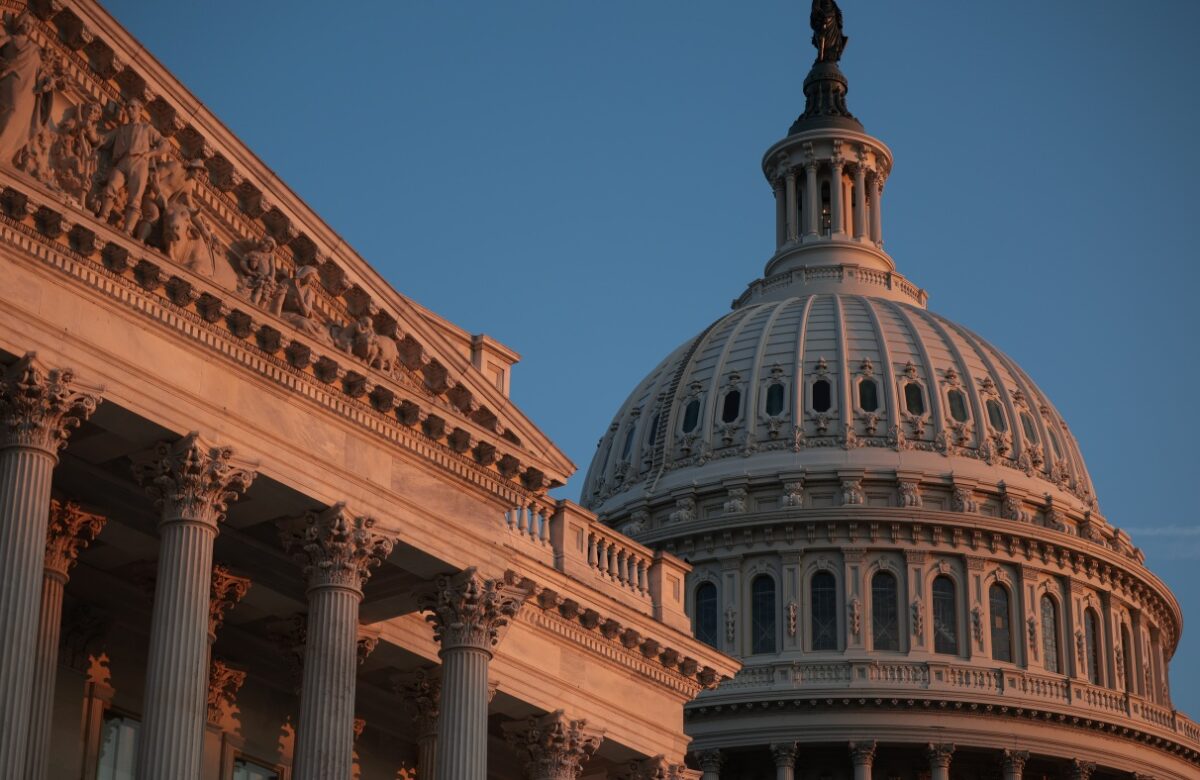
The football stadiums that never were
- Sports
- December 30, 2023
- No Comment
- 403
Peter Storrie can remember visiting the London studio of Herzog & de Meuron, the renowned Swiss architects, and being shown a striking vision of Portsmouth’s future.
“It was something else,” he tells The Athletic. “They put it up on the screen for us and it certainly had the wow factor.”
This was 2007 and the ambitious plans were for a new 36,000-capacity stadium on the city’s docks. Storrie, then chief executive, had accepted that Portsmouth would need to leave Fratton Park, the club’s home since 1899, and a proposed relocation could hardly have been more impressive.
Located in between the Spinnaker Tower and the historic naval base, a £600million waterfront project that would include apartments and restaurants promised a transformational impact.
“This will be the most spectacular stadium, set against the backdrop of the harbour and the English Channel befitting the club’s history,“ said Storrie back in 2007, when Portsmouth were a top-half Premier League club.
They would win the FA Cup a year later when beating Cardiff City, too, but by that time plans for a new stadium had been all but scrapped. Opposition had come from local councillors and the British Royal Navy, who had “operational and security concerns” after choosing to base two super aircraft carriers nearby.
Portsmouth pivoted from the dockyards to another waterfront site nearby at Horsea Island, again designed by Herzog & de Meuron with little expense spared. Again it collapsed, this time against the backdrop of the global financial crisis of 2008. As such, Fratton Park, boisterous but limited, remains the club’s home.

Portsmouth’s plans at Horsea Island (Herzog & de Meuron)
“The stadium on the docks was a fantastic design, really stunning,” Storrie says. “It would’ve been perfect. It was there on the waterfront. It would’ve been an iconic venue. One of the great stadiums if it had been built.
“Would it ever have got through planning? Probably not — but who knows? It was one of the great designs that never happened.”
And it is a crowded field. For every impressive stadium built by English clubs in the last 30 years, there has been another that failed to get beyond the architects’ drawings or the fantasies of an owner.
Like Chelsea’s vision for Battersea Power Station and the Gothic re-imagining of Stamford Bridge. Or Liverpool’s proposed move to a futuristic new home in Stanley Park. Everton lived out three different projects at Kings Dock, Kirkby and Walton Hall Park before finally planting a spade in the ground at Bramley-Moore Dock, site of their long-awaited new home from the 2025-26 season.
Tottenham Hotspur had their own plans to knock down and rebuild the Olympic Stadium before West Ham United became tenants in 2016, while once upon a time Birmingham City had plans for a 55,000-seater stadium that would form part of the Birmingham Sports Village. Karren Brady, Birmingham’s managing director back in 2006, called it “a once-in-a-lifetime regeneration project.” Or, as it turned out, not-in-this-lifetime.
That is typical of the well-versed big sell, especially when supporters are being asked to leave a historic home. Project what the future might look like in all its animated glory and hope it marks the first step on the journey.
Actions do not always accompany the words. Whether through funding problems or supporter opposition, sometimes both, English football has a long list of projects that have gone to the great drawing board in the sky.
Leeds United were riding the crest of a wave back in the spring of 2001. A run to the Champions League semi-finals, where they were beaten 3-0 by Valencia, had emboldened the belief that Leeds could establish themselves among English football’s elite and part of the grand plan was a move away from Elland Road.
A wasteland site was picked near junction 45 of the A1(M) at Skelton and a new £40million, 50,000-capacity ground was proposed. Elland Road, meanwhile, would be sold to the local council for an estimated £20million to help fund it.
Peter Ridsdale, Leeds’ chairman, had a blunt message as they attempted to keep pace with those at the top of the Premier League. “Doing nothing is not an option,” he warned in a letter to fans.
All supporters were asked if they would back a renovation of Elland Road or a move to a new stadium during a consultation process. “On the one hand there is the history and the memories that we all share, and on the other hand is the need to ensure that we offer future generations a world-class team and a world-class stadium,” said Ridsdale.
Three months later it was announced that 87.6 per cent of the votes cast had been in favour of leaving Elland Road. “An overwhelming endorsement,” concluded Ridsdale, who outlined plans to find sponsorship for the club’s new home.

Elland Road has been largely untouched for years (Serena Taylor/Newcastle United via Getty Images)
The push to move was not as universally popular as Ridsdale had claimed after less than half of ballot papers were returned but those in opposition, the traditionalists keen to stay at Elland Road, need not have worried.
Leeds’ outlay of £77million on players inside the previous three lavish years caught up with them and within three years of Ridsdale championing a move, it was a Championship club once more. Skelton was quietly brushed under the carpet and two decades later, with no meaningful restoration work completed, Elland Road and its limitations remain a headache for others to inherit.
Funding — or a lack of it — typically becomes the insurmountable obstacle in these grand stadium designs.
Constructing a new home from scratch or rebuilding an existing ground is the biggest possible expenditure any club can face and, as such, is reliant on huge borrowings. The biggest and best are now £1billion projects.
Liverpool did not have to find that much back in 2007 but even the touted £400million needed to build a 60,000-seater stadium in Stanley Park proved beyond former owners Tom Hicks and George Gillett.
Leaving Anfield behind had been a key thread to the promises of the U.S. businessmen, with Gillett pledging at his opening press conference that “the shovel needs to be in the ground in the next 60 days.”
The previous five years, before the arrival of Hicks and Gillett, had seen a range of plans put forward, with outline planning permission approved for a Stanley Park stadium as far back as 2003.
Original plans were redesigned by Hicks and Gillett and revised again after a target to begin work in the summer of 2007 was missed, before any tangible hope of a new stadium began to recede in 2008.
Like Portsmouth, the credit crunch and owners with limited resources brought the project to a standstill.
“Our commitment to building a new world-class Liverpool Football Club stadium is undiminished,” said Liverpool in a statement. “Like many other major development projects in the UK and overseas we are affected by global market conditions. We will use this period productively and revisit the plans for the stadium to increase its capacity to 73,000 seats.”
The vision failed to materialise, though. Year after year there was no meaningful progress until Hicks and Gillett were replaced by Fenway Sports Group, who confirmed their intention to instead redevelop Anfield in 2012.
“It could have been brilliant but we have probably set ourselves back several years,” former chief executive Ian Ayre said in 2011. Liverpool will finally get the 60,000-capacity stadium they have spent 20 years waiting for when the new Anfield Road Stand is fully opened by the end of January.
Those years of uncertainty at the start of this century would regularly see a contentious plan proposed. With Everton accepting the need to leave Goodison Park for two decades or more, a ground share between the two Merseyside clubs was touted on more than one occasion.
As much as £30million was promised from public funds in 2003 for a new super-stadium in the city. The North West Development Agency proposed that Liverpool and Everton should share in a bid to regenerate the wider Anfield area and six years later, as England gathered together its push to host the 2018 World Cup. Meetings were even held with the then sports minister Richard Caborn.

Goodison and Anfield is separated by Stanley Park – plans to build one stadium to house them both did not go down well (Simon Stacpoole/Offside/Offside via Getty Images)
The plans, though, were consistently met with opposition from the two rivals, both in the boardroom and among fan groups. Everton described it as “utter nonsense” the clubs should groundshare in 2009.
That was because they had other ideas. Big ones. Unperturbed by the failed attempt to build a new 50,000-seater stadium on the King’s Dock, now site of the Liverpool Echo Arena, by 2007 they were pushing ahead with a move to a site in Kirkby, eight miles out of the city centre on Liverpool’s northern edge.
It would form part of an enormous retail park headed up by Tesco and the capacity increases were forecast to generate £6million more per season. Selling the naming rights for the stadium would earn the same amount again.
Not that it ever went to plan. An opposition group, the Keep Everton In Our City Campaign, was formed, while Liverpool City Council, who felt Everton should not leave their boundaries, were strongly against the move. Leader Warren Bradley called the proposed stadium in Kirkby “a cow shed in a small town”. They got their wish by 2009, a period of economic stress that hurt the construction industry, when the UK government blocked the proposed £400million joint development.
Good things are coming to those who have waited, though. After all the false dawns and stadium designs that never were across 20 years, Everton will relocate to Bramley Moore-Dock in 18 months, a wonderful new stadium that will be one of 10 hosts for Euro 2028.
If Everton will soon join Liverpool in having the bigger home they always wanted, others are not so fortunate. Chelsea supporters continue to wait on proposals that would see Stamford Bridge redeveloped or a long association with their home ground ended by a move. The capacity of 40,000 ceased to be sufficient long ago.
History tells us that. Chelsea’s previous owner, Roman Abramovich, was eager to increase matchday revenues as far back as 2012 when the club submitted a formal offer to buy Battersea Power Station on the south bank of the Thames. The site alone was valued at £500million and given the Grade II listed status of the former electricity station, plans were unveiled that would see its four iconic chimneys incorporated into a design.

Chelsea wanted to redevelop Battersea Power Station (Vittorio Zunino Celotto/Getty Images)
Designs were made public after Chelsea had been outbid by Malaysian property developers SP Setia and Sime Darby Property, regarded at the time as a means of applying diplomatic pressure.
“We firmly believe our proposals could address the unique challenges presented by the site,” said Chelsea in a statement. “The design would integrate the stadium with the power station in a sensitive, unique and powerful way, with all significant historical aspects of the Power Station to be retained.”
Not that it made much difference. The impressive restored site is now home to apartments, shops, bars and restaurants.
Chelsea did not stand still and, three years after their failed attempt to buy Battersea Power Station, had revealed stunning designs for a new Stamford Bridge. Like Portsmouth’s docklands plans, Herzog & de Meuron were behind the drawings that would see Chelsea rehoused in a 60,000-capacity stadium by 2020. The striking images were said to be “inspired by the design of Westminster Abbey” and quoted, at the time, as costing anywhere between £500million and £1billion. Cathedrals, as it was likened to, did not come cheap in a heavily populated area of the capital.
There were objections but broad support for the project. Inside a year, though, Abramovich had called a halt to it all. The crux of the problem? A visa.

This was a design for Chelsea’s new home to be opened in 2023 (Herzog & de Meuron)
Abramovich, back in the summer of 2018, encountered delays over a UK visa after seeing his previous one expire and a statement released by Chelsea said it was the “current unfavourable investment climate” that had been the trigger to postponing a Stamford Bridge redevelopment that would never be revived. The rest is an inglorious history for Abramovich, who was forced to sell Chelsea in 2021 when sanctioned by the UK government following Russia’s invasion of Ukraine.
The dream of a new home has not died for Chelsea as new owner Todd Boehly prepares to share new plans in 2024 but there will be regrets that a stadium build did not come sooner. Chelsea must make do with a stadium that houses 20,000 fewer supporters than the homes of London rivals, Tottenham, Arsenal and West Ham. Matchday revenues have flatlined at Stamford Bridge and, as of last season, meant Tottenham had a £37million annual advantage through the turnstiles.
Another club with sudden regrets are Newcastle United, who are going through their own consultation process on where to go next. St James’ Park, capped at 52,000, has been sold out every week since the takeover led by Saudi Arabia’s Public Investment Fund was completed in 2021.
Oh for something bigger, like the plans hatched in 1997. A planning application for a £90 million, 55,000-seater stadium on Castle Leazes, half a mile from St James’ Park, was submitted. They included a retractable roof and the option for capacity to be increased to 70,000.

A young fan checks out the new stadium plans in 1997 (Tim McGuinness/Mirrorpix/Getty Images)
“St James’ Park simply wasn’t big enough to cope with demand and the site itself had severe limitations,” says Sir John Hall, the former owner of Newcastle. “We needed a world-class stadium to offer us the best chance of sustained success.”
The plans, put on public display, were dubbed the “San Siro of the North” in a nod to the shared home of AC Milan and Inter Milan, and included a plan to convert St James’ Park into an indoor arena.
Fans backed the idea but others did not. A petition included 36,000 names opposed building on the Town Moor and a public inquiry causing lengthy delays became unavoidable once English Heritage took an interest in Newcastle’s plans. By November 1997, the focus had instead been turned to extending the capacity of St James’ Park from 36,000 to its 52,000, as it is today.
Fifteen or so miles to the south, rivals Sunderland had been through their collapsed bid by that point. They had proposed building a “Wembley of the North” close to the Nissan car manufacturing plant in 1992 and even incorporated twin towers in the designs included in a postal referendum. “That was intentional on my part; I wanted it to look like Wembley,” said former chairman Bob Murray.
The complex was due to cost £75million and include a 40,000-capacity stadium, 12,000-seater indoor arena and retail park. Such was their confidence, Sunderland even submitted a bid for it to be one of eight venues for Euro ’96. Then bang… EU funding they had lobbied for in Brussels had been pulled.
“Just before the Euro ’96 venues were announced, I received a phone call, out of the blue, to inform me that Nissan had suddenly turned hostile towards the new stadium,” wrote Murray in his autobiography I’d Do it All Again. “A call was made to 10 Downing Street and everything changed. Suddenly it was made abundantly clear it wasn’t going to happen.”
Sunderland instead went with the Stadium of Light as their next home after Roker Park, moving in 1997. Others have not been so fortunate.
Like Luton Town, who hope to be seeing out their final years at Kenilworth Road. It is almost 30 years since former owner David Kohler shared his wacky plans for a 20,000 indoor arena dubbed the Kohlerdome. Alas, he found neither the funding nor the site, which tends to be a problem.
There are countless others, too. Bristol Rovers have spent 20 years searching for a modern new home, as have Queens Park Rangers, who have hoped to build a new stadium at nearby Wormwood Scrubs. Blackpool (Whyndyke Farm), Carlisle United (Kingmoor Park), Southend United (Fossetts Farm) and Grimsby Town (Peaks Parkway) are among the countless other clubs who have devised ambitious plans yet still have not moved.
Just like Portsmouth. “It was very difficult to convert Fratton Park into a state-of-the-art stadium and that’s something the club needed to progress,” says Storrie, the former chief executive. “We had the fans pretty much onside but sadly it just didn’t happen.”
It was not the first stadium project to remain an architect’s vision and will not be the last.
Top image: Portsmouth’s plans for a new stadium on the waterfront were unveiled in 2007 (Herzog & de Meuron)
#football #stadiums









